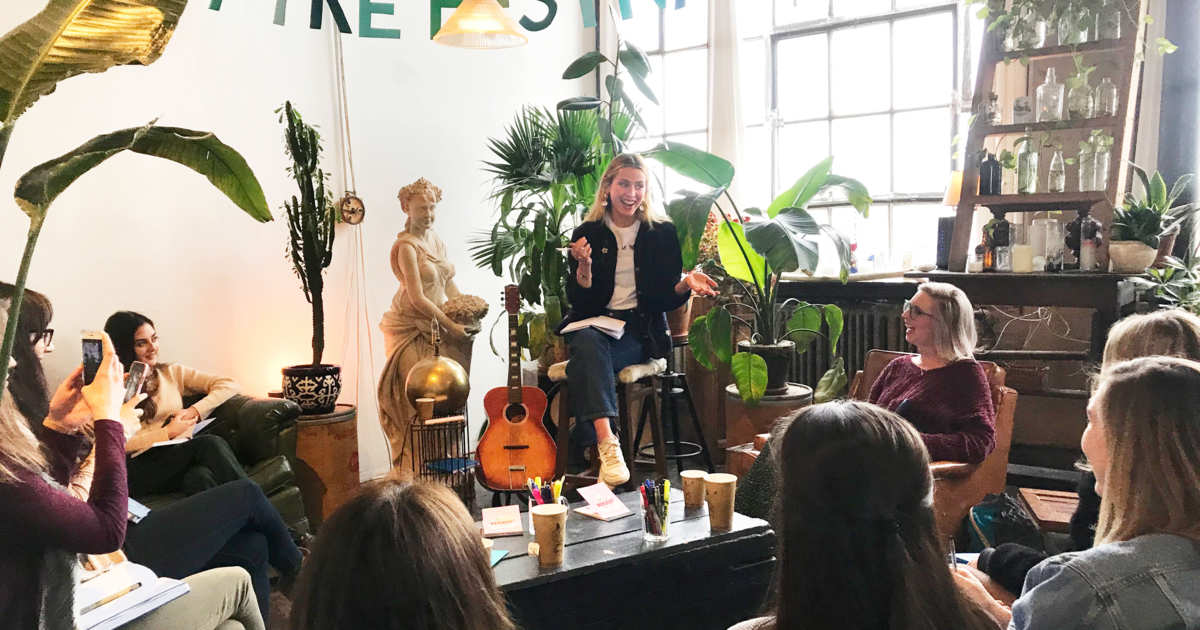“Creative” is a fixture of the self-help industry,
“创意”是自助行业的固定模式,
touted as a secret to success and a key to enlightenment on podcasts and websites
并在播客上,网站上,以及《创造性信心:释放我们所有人的创造性潜能》这样的书中
and in books like “Creative Confidence: Unleashing the Creative Potential Within Us All.”
反复被吹捧为成功的秘诀和开悟的关键。
And in recent years, creative has made a grammatical migration, crossing over from adjective to noun.
近年来,“creative”这个词已经经过了语法上的迁移,从形容词变成了名词。
A creative is a kind of worker, or rather many kinds of workers —
指的是某种工作者,或者更确切地说,是各种各样的工作者——
a catchall that takes in web coders, graphic designers, copywriters, actors, painters, D.J.s, cocktail mixologists, Instagram influencers
这是一个包罗万象的总称,包括网络程序员,平面设计师,文案,演员,画家,DJ,鸡尾酒调酒师,Ins名人,
and all the rest of the culture-and-information-industry professionals that the sociologist Richard Florida famously called “the creative class.”
以及其他文化信息行业的,被社会学家理查德·弗罗里达称之为“创意阶层”的所有专业人士。
Creative is not just an attribute. It is an identity.
“创意人士”不仅仅是一种属性。还是一种身份。
“Creative” can be traced to the Latin creare, meaning to beget or to bring forth.
“Creative”这个词的词源可以追溯到拉丁语里的“creare”一词,意思是“产生”或“使产生”。
In philosophical classical Latin, the verb was sometimes used in reference to the ultimate creative act, divine creation.
在充满哲学的古典拉丁语中,这个动词有时指的是终极创造行为或者神圣的创造。
The English adjective “creative” dates to the 17th century;
英语里作形容词的“creative”一词可以追溯到17世纪;
it was likely during the Enlightenment that it gained wide use as a descriptor for human endeavors, often artistic or literary, that have qualities of originality and excellence.
很可能就是在启蒙运动期间,作为形容具有独创性和卓越品质的人类活动,通常指艺术或文学活动,的词得到了广泛的运用。
Today, in any case, we deploy the term far more promiscuously.
今天,我们对这个词的使用,无论是用在什么情况下,都要混乱得多。

A label once reserved for the grandest artistic undertakings and the most exalted creators,
一个过去专门用来形容最伟大的艺术事业和最崇高的创造者,
from God to da Vinci to the mother who birthed you,
即上帝,达芬奇以及给你生命的母亲之辈的标签,
is now applied willy-nilly to such activities as scrapbooking and bicycle-frame building,
如今却被人们随意地贴到了美编、自行车框架组装之类的活动,
to the person who pulled your morning latte or designed the logo for your calorie-counting app.
以及早上给你打拿铁或者为你的卡路里计算软件设计商标的人身上。
This democratization can feel absurd, but it strikes at a deep truth.
这种民主化或许会让人觉得颇为荒谬,但它也触及了一个深刻的真理。
Humans derive meaning and pleasure from making stuff.
人类会从制造物品的过程中寻找意义和乐趣。
To engage in even the smallest acts of creation — molding a clay bowl in our hands or shaping an idea in our minds — is to perform a conjuring trick,
从事哪怕是最微不足道的创造行为——比如手工制作一个陶碗或者在脑海里构思一个想法——都相当于在表演一场魔术,
to experience the mysterious and sublime power of bringing a new thing into existence.
相当于在体验将新事物带入现实那种神秘而崇高的力量。
There was a time, not long ago, when the pursuit of that kind of satisfaction was considered morally dubious.
不久以前,追求那种满足感还会受到道德上的质疑。
Historically, bourgeois society regarded artists as disreputable and deviant, eccentrics doomed to the social margins.
在历史上,资产阶级都视艺术家为声名狼藉、离经叛道、注定要被社会边缘化的怪人。
Our 21st-century cult of the creative reflects a shift in this attitude.
我们21世纪的人对创造性的崇拜反映这种态度已经发生了转变。
Today, many haute-bourgeois people cultivate personas as artists and bohemians — even when they are marketing executives.
如今,很多高级资产阶级人士都会塑造自己艺术家和波西米亚式放荡不羁的一面——就算身为营销主管的人也不例外。
This change reflects a broader transformation of the economy:
这种变化反映了整个经济发生的更广泛的转型:
the information-technology revolution and the reorientation of cities from manufacturing hubs to centers of knowledge work and cultural production.
信息技术发生的革命以及城市从制造业中心转向脑力工作和文化生产中心的重新定位。
译文由可可原创,仅供学习交流使用,未经许可请勿转载。



